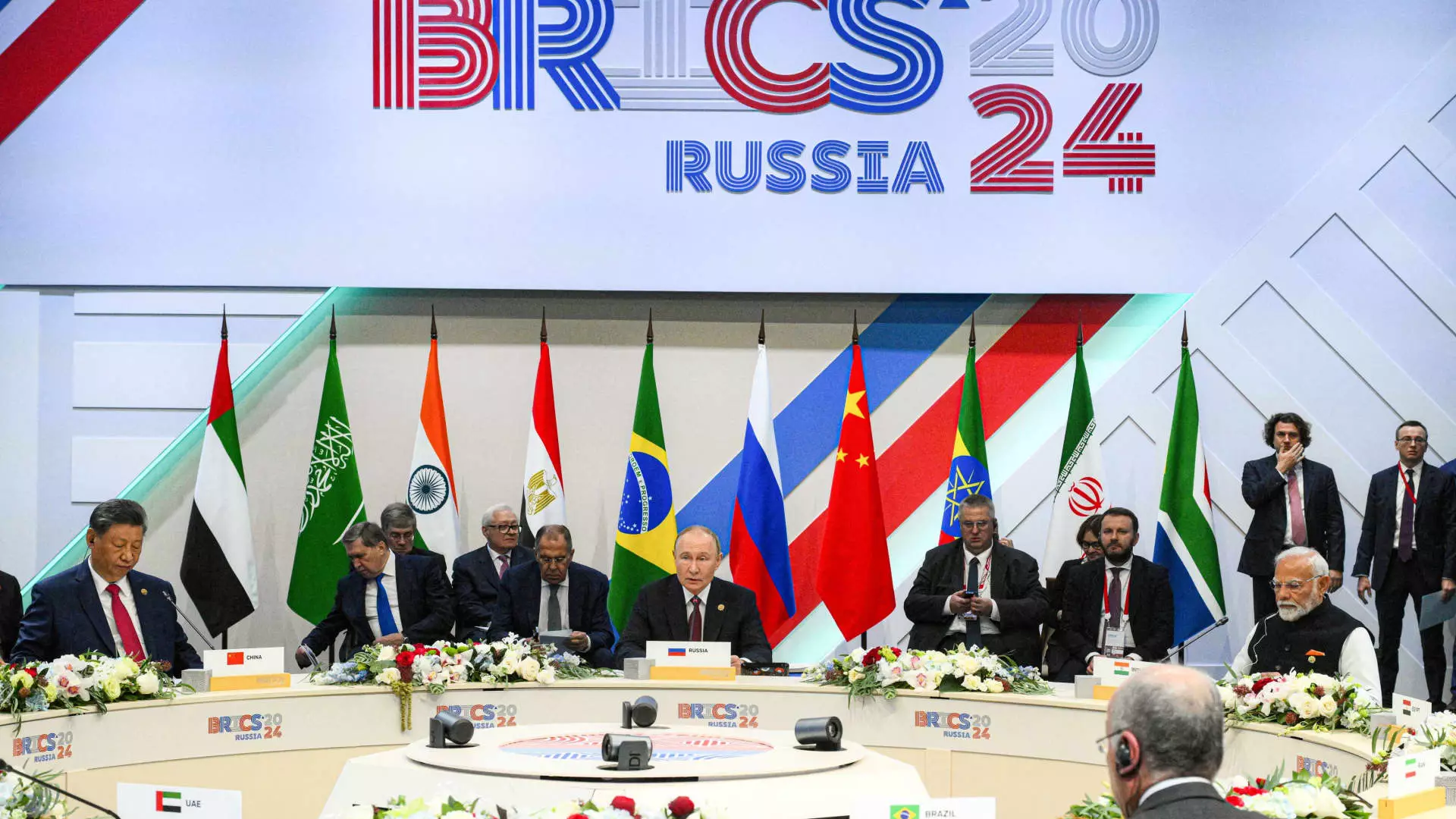In a bold and provocative move, President-elect Donald Trump issued a warning to a coalition of emerging economies known as the BRICS alliance, threatening them with a staggering 100% tariff on their exports to the United States. This warning extends to Brazil, Russia, India, China, South Africa, Egypt, Ethiopia, Iran, and the United Arab Emirates, with countries like Turkey, Azerbaijan, and Malaysia seeking to join this influential group. Facebook’s Truth Social platform served as the backdrop for Trump’s declaration, underscoring his administration’s combative approach to international economic relations.
The BRICS nations have voiced dissatisfaction with the predominance of the U.S. dollar within the global financial architecture, viewing it as an impediment to their economic autonomy. Currently, the dollar comprises approximately 58% of global foreign exchange reserves, according to the International Monetary Fund. However, the BRICS nations are moving towards de-dollarization, seeking alternatives to traditional dollar-denominated trade, particularly in critical commodities like oil. This trend poses a significant challenge to the dollar’s long-standing supremacy, leading to concerns from American leaders about potential shifts in financial power dynamics.
The concept of de-dollarization has gained traction among BRICS members, who have expressed their intent to establish new trading currencies that could operate outside of the dollar’s influence. This strategy is not merely theoretical; leaders like Russian President Vladimir Putin have openly criticized the United States for “weaponizing” its currency. Putin emphasizes that the inability to conduct trades in dollars forces countries to look for alternative systems, highlighting frustration with U.S. financial policies.
Many observers within the economic space view this as a significant moment of transition, but they also recognize the substantial barriers facing BRICS in dethroning the dollar. The U.S. dollar’s position remains solid in the near future, as outlined by the Atlantic Council model, which reinforces that the greenback is “secure” for the time being. Nations endeavoring to create a shared currency or alternative payment systems grapple with logistical complications, trust issues, and the overarching influence that the U.S. maintains over international trade.
Trump’s tariff threats are not isolated incidents but rather part of a broader narrative of his administration’s relationship with trade. Historically, the use of tariffs has been a tool for U.S. presidents aiming to protect domestic industries, control trade balances, or exert political pressure. Previous instances, such as Trump’s threats of a 25% tariff on imports from Mexico and a 10% levy on goods from China, illustrate a consistent pattern of employing economic sanctions to achieve policy goals.
Current discussions around these tariffs often become entangled with issues much broader than mere economics, such as national security and immigration policies. The trade negotiations with Mexico and Canada served as a backdrop for Trump’s emphasis on curbing illegal immigration, showing his willingness to leverage economic tools for varied political objectives. Notably, these tactics invoke a sense of urgency among U.S. trading partners, motivating them to seek assurance against potential tariff wars.
The international community is watching closely as Trump’s stance could reshape the dynamics of global trade. Canadian Prime Minister Justin Trudeau’s recent visit to the U.S. revealed the delicate balance of diplomacy required when confronting a leader known for his unpredictable trade policies. With a lack of guarantees against tariffs, countries are prompted to reevaluate their trade strategies and alliances carefully.
Moreover, the reaction from BRICS members could encapsulate a shift in global economic parameters. If they act collectively to develop solutions that bypass U.S. financial hegemony, it could lead to formations of new economic blocs that might redefine globalization in the long run. The possibility of a significant power shift toward Asian and African nations is on the horizon, sparking discussions that will shape international relations for generations to come.
Trump’s threats of retaliatory tariffs signal not just a tactical maneuver within the chess game of international trade but potentially a much larger transition in global economic power dynamics. The BRICS nations, while frustrated and under pressure, may very well be at the cusp of forging a new path away from reliance on the U.S. dollar—nevertheless, the practicality of such ambitions remains to be seen.


Leave a Reply